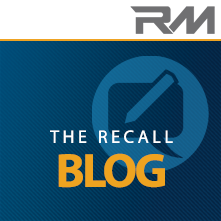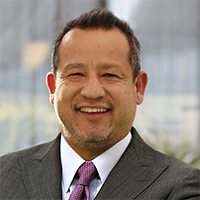Are We Self-Driving Our Way Over a Cliff?
Are We Self-Driving Our Way Over a Cliff?
…
I have a confession – I’m scared to get into a self-driving car. Even if I sat in the driver’s seat and could take immediate control, I just don’t have any desire to risk death or injury should some line of software code misplace a comma or some other character. Perhaps I’m a control freak or maybe I just love driving, but the self-driving wave is like a Russian tsunami headed our way and the impact could cost us more than a few cyclists and unsuspecting pedestrians.
Self‑driving vehicles (or autonomous vehicles, AVs) promise transformative change—reducing human error, increasing mobility access, and reshaping urban life. Yet beneath the hype lies a complex web of current safety concerns, potential future hazards, and deep economic consequences as consumers shift away from ownership toward mobility‑as‑a‑service (MaaS).
The first pedestrian fatality involving a self‑driving vehicle occurred in March 2018, when Elaine Herzberg was struck by an Uber test car in Tempe, Arizona. That case underscored early gaps in collision‑avoidance systems and testing oversight. Since then, multiple incidents involving Tesla’s Autopilot and Full Self‑Driving (FSD) systems have raised alarms. A federal jury recently found Tesla partially liable (about one‑third) in a fatal 2019 crash when the vehicle failed to detect a T‑intersection, awarding over $240 million in damages.
Other reported cases include chain‑reaction crashes on the Bay Bridge caused by abrupt lane changes or sudden decelerations while Autopilot was engaged, injuring multiple people. Regulators are also investigating 2.4 million Tesla vehicles over FSD failures in low‑visibility environments.
Waymo reports its Level 4 robotaxis reduce injury crashes with pedestrians by around 92% compared to average human drivers, and serious injuries in intersections by 96%. Yet early 2025 saw Waymo recall 1,212 vehicles due to software flaws leading to collisions with roadside barriers—though no physical injuries resulted, the flaw eroded public trust.
Cyclists are in danger as well. In February 2024, a driverless Waymo taxi in San Francisco struck a cyclist at a four‑way stop intersection. The cyclist emerged from behind a truck unseen by the car; despite braking, the car couldn’t prevent the crash. In separate incidents, Waymo vehicles edged into crosswalks causing cyclists to crash or cut off cyclists making legal turns.
Critics also cite limitations in sensor performance: poor lighting, rain, and low‑contrast or dark clothing may render cyclists or pedestrians less visible to cameras or LiDAR. There’s also the risk that vehicle algorithms may prioritize passenger comfort or conventional traffic flow over cyclist safety in ambiguous situations.
In a lawsuit filed February 2025, a San Francisco cyclist was seriously injured after a Waymo robotaxi illegally stopped in a bike lane and a passenger opened a door without warning. The cyclist was knocked into traffic and suffered severe injuries. The suit alleges failure of Waymo’s “Safe Exit” system and highlights gaps in passenger behavior oversight.
Companies like Cruise have faced driverless‑car crashes, hardware failures, and safety investigations. The California DMV suspended Cruise’s permit in late 2023 following repeated operational mishaps, including hard braking incidents and pedestrian collisions. NHTSA investigations remain open into several AV manufacturers, and transparency remains uneven.
Despite these challenges, proponents highlight the potential for AVs to reduce accident rates by up to 90% when industry-wide vehicle penetration is high—translating to massive economic savings and lives spared. Still, until software reliability, sensor performance, and edge‑case behavior improve dramatically, AVs pose safety risks that disproportionately affect pedestrians and cyclists.
As AVs shift into mainstream mobility, new classes of incidents may emerge:
- Edge cases and unpredictable human behavior: cyclists or pedestrians making sudden, non‑standard movements may be misinterpreted or missed entirely by systems trained largely on car behavior.
- Systemic software errors: as seen with Waymo’s barrier collisions or Cruise’s hard braking across vehicles, rare bugs can propagate across fleets.
- Overreliance on automation: passengers assuming a vehicle is fully safe may ignore warnings or remain disengaged, reducing the opportunity for human intervention.
Urban infrastructure in many cities remains designed for human drivers. Poorly marked bike lanes, inconsistent signals, and pedestrian overcrowding can increase the risk of AV misreads. Mixed‑use designs (roundabouts, curbside pick‑up/drop‑off zones) require dynamic interactions that autonomous systems may mishandle unless city planning evolves in parallel.
Determining liability in AV incidents remains unsettled. Rather than pointing fault at a driver, future litigation may implicate manufacturers, software developers, fleet operators, or even local municipalities depending on contextual factors. Insurers are already shifting to policies focused on product liability and OEM risk, rather than individual drivers. The financial implications of recalls could skyrocket as courts cite the OEM liable.
Additionally, public perception may evolve: even infrequent but serious failures (high‑damages jury awards, headlines, viral videos of near‑misses) may delay widespread trust—even if AVs statistically reduce accidents overall.
Studies and forecasts indicate the autonomous vehicle market could grow from $33–$110 billion in 2024 to hundreds of billions by the early 2030s. If the introduction of Uber and Lyft pulled consumers away from traditional taxicabs, AVs will undoubtedly disrupt traditional rideshare services. Take Tesla’s Robotaxi service, which just made its debut in cities like San Francisco and Austin. While still in a testing phase, the company offered rides for $1, with a $1 per mile surcharge. At those rates, it’s hard for the side-hustle human drivers to make a buck.
McKinsey estimates that AV fleets could drastically reduce parking demand—freeing up billions of square meters—and in theory shorten commute times by hundreds of hours annually per commuter via automated ride usage and productivity time.
As the demand for AVs grows, OEMs and dealerships could be facing a dramatic shift in what it means to own. As mobility‑as‑a‑service models mature, many consumers may stop buying private vehicles, choosing instead to hail robotaxis on demand.
- Reduced private sales volume, especially to fleet operators rather than individuals.
- Supply chain shifts toward sensors, AI modules, and software integration, rather than human‑driven powertrains or interior design for family use.
- Rising competition from tech companies like Google/Waymo, Tesla, Apple, Baidu, or Pony.ai, which may capture mobility service revenue and data ecosystems.
- New revenue models: automakers may form AV fleet services or subscription platforms, repositioning dealers as service centers or fleet maintenance hubs rather than new car warranty sales points.
Dealerships may shrink as vehicle turnover falls. Instead of selling new cars every few years, dealers may manage cleaning, charging, and servicing of shared AVs, offering subscription-based maintenance or mobility packages.
Insurance is also pivoting: policy models may evolve from personal liability to manufacturer and fleet coverage. KPMG projects that by 2040, product liability and commercial lines will represent larger fractions of insurance revenue than personal auto lines.
Employment disruption could be substantial: taxi, delivery, and truck drivers are likely to lose jobs, even as new roles emerge in fleet operation, software development, cybersecurity, and data analytics. Workforce retraining will be essential to smooth the transition.
Manufacturing jobs tied to traditional drivetrain assembly may decline, while demand grows for sensor manufacturing, robotics integration, and AI training infrastructure.
AVs offer undeniable long‑term promise: reduced accidents (especially those caused by human error), greater mobility access, optimized infrastructure usage, and flexible urban planning. Waymo’s own data suggests dramatic reduction in injuries to pedestrians and cyclists (82–92% lower crash rates) and serious‑injury crashes down 96% at intersections.
Yet the path forward is rife with transitional risks:
- High‑profile crashes and litigation (e.g., Tesla verdicts of $243 million and $329 million in two separate incidents) raise public skepticism and regulatory pressure.
- System failures—such as Waymo’s barrier collisions recall, Cruise’s abrupt braking, Tesla’s lane drift—underscore that no system is bulletproof.
- Vulnerable road users remain particularly exposed—not because AV technology is worse, but because it operates under different assumptions and sensory limitations than humans.
On the economic front, consumer behavior is already shifting. Urban residents may forgo ownership, opting instead for robotaxi services. Automakers, insurers, and dealerships must pivot quickly or risk obsolescence. The winners in this new landscape may be companies that combine strong software platforms, robust fleet management, and trust in safety outcomes.
Self‑driving vehicles carry immense potential to reshape safety, mobility, and the automotive economy. Yet their current limitations—sensor blind spots, software edge‑case failures, legal ambiguity, and passenger/cyclist mismatch with machine behavior—pose real dangers today. As deployment increases, these risks could amplify without cautious regulation, deliberate infrastructure adaptation, and ongoing transparency.
Meanwhile, the economic displacement is already underway: fewer car owners, uncertain futures for dealerships, shifting insurance models, and restructuring of workforce roles. Whether incumbent automakers, tech newcomers, or platform aggregators prevail depends on who can manage the trade‑off between innovation, public trust, and actual safety at scale.
If the shift is handled thoughtfully—centering real safety gains and equitable urban design—the promise of AVs may be worth the disruption. But if firms push ahead before failure modes are fully understood, we may see expensive setbacks, liability shocks, and slowed public adoption.
…
About the Author


